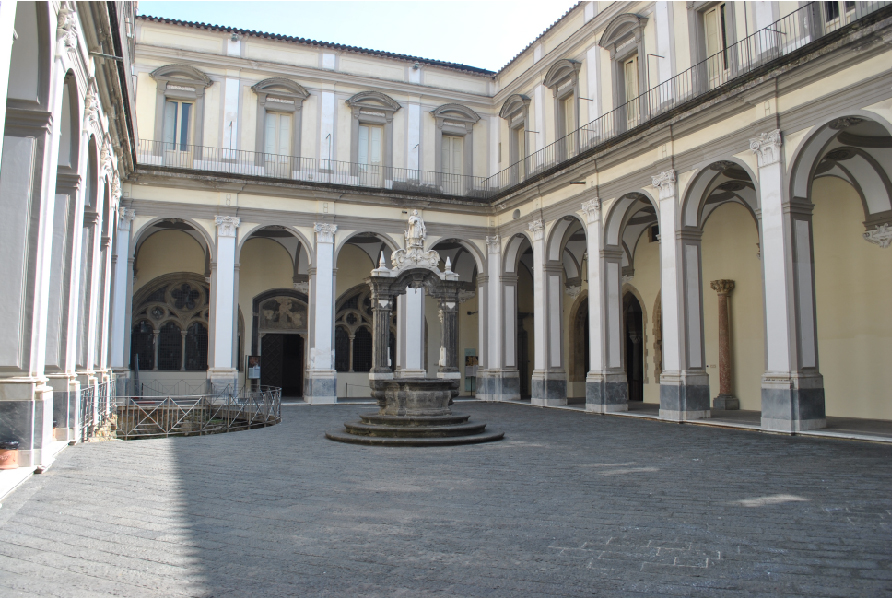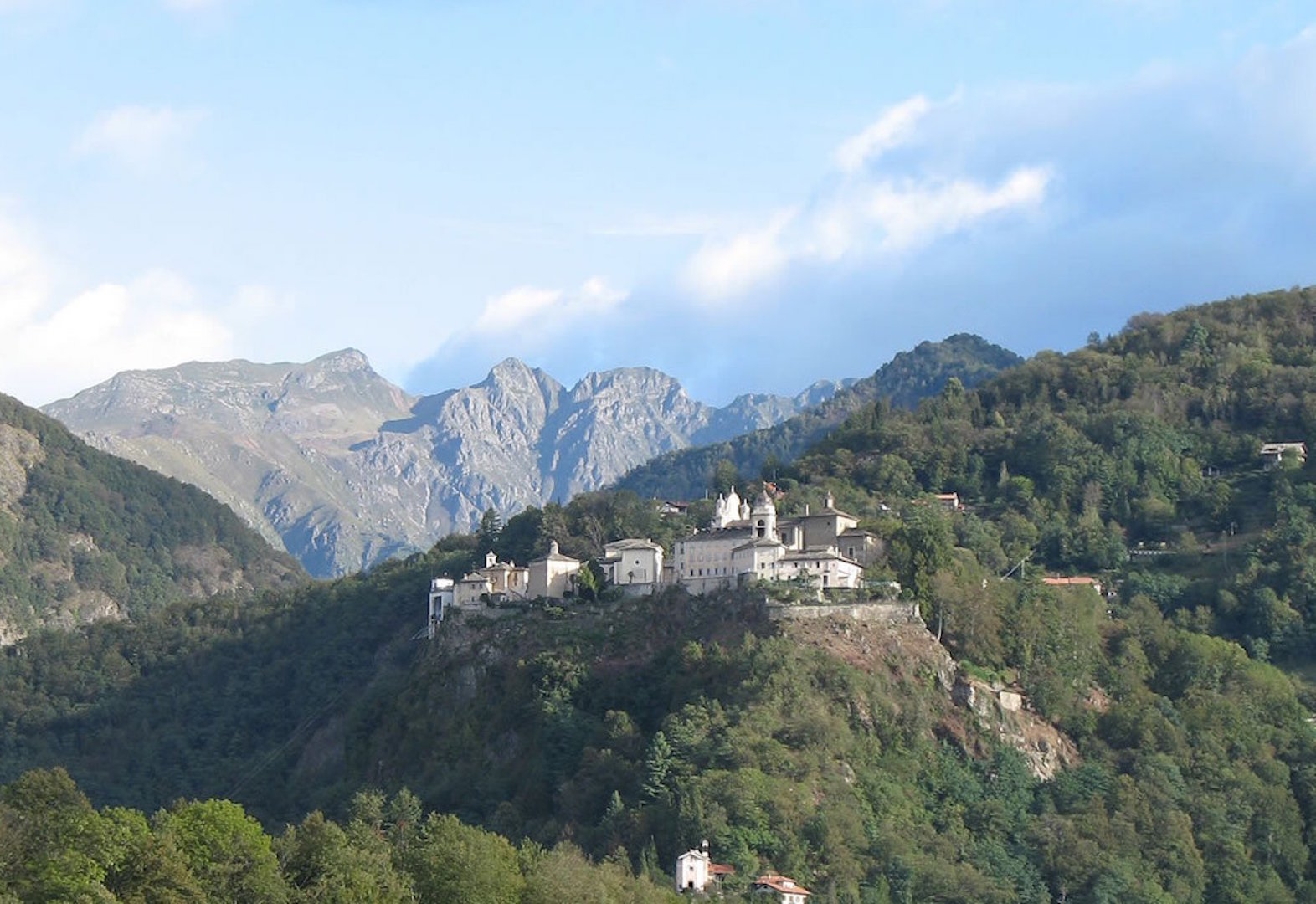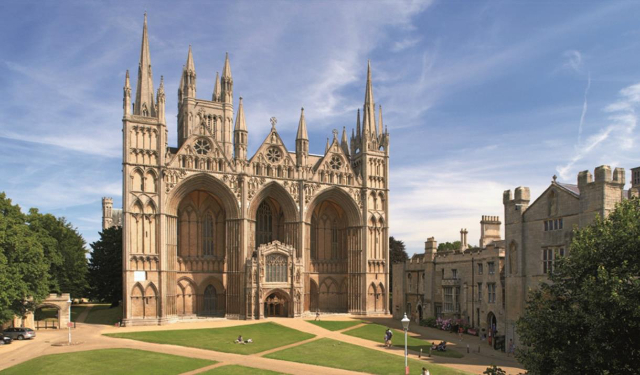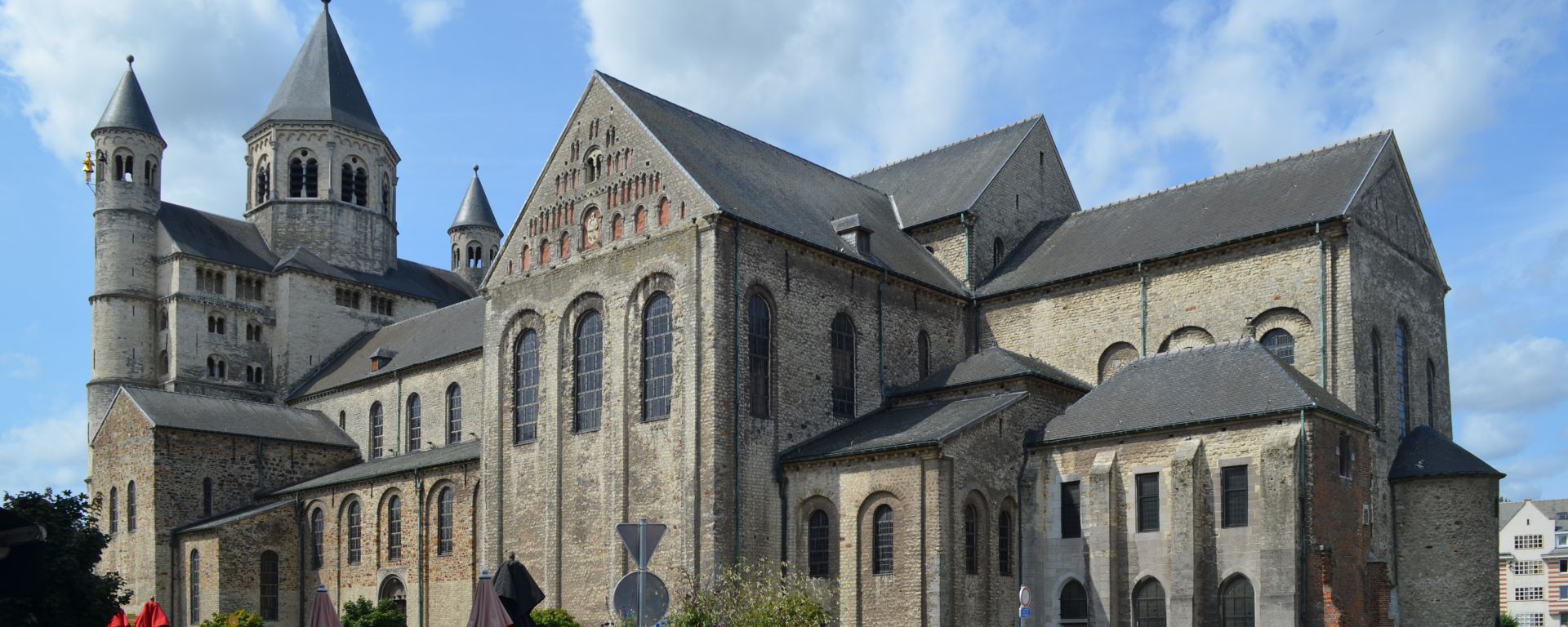In the area of the forum, which represented the heart of the ancient Greco-Roman city, between the Decumanus Major and Decumanus Inferior, an early Christian church (6th century AD) was first built, demolished in the 12th century, and then the present basilica, built at the behest of Charles I of Anjou starting in 1270. The church, characterized by a single-nave structure and Latin cross, was erected by the Franciscans, initially with the use of French architects and craftsmen, later replaced by local workers; between the 17th and 18th centuries, it was then affected by a radical renovation in the Baroque style. Restoration carried out between the late 19th century and the first half of the 20th century erased the strong Baroque connotation, except for the 18th-century facade by Sanfelice.
In the church, Boccaccio met his Fiammetta, while in the adjoining convent-which hosted meetings of the kingdom’s parliament in the 1300s-Petrarch also stayed.
Underneath the church, the convent and the cloister, rooms rediscovered thanks to the work of archaeologists can now be visited in the hypogeum: accessing the area, one enters a Roman hinge (i.e., a road orthogonal to the decumani), three meters wide and about sixty meters long, overlooked by numerous stores: a bakery, a laundry, taverns, stores and the Aerarium, where the city’s finances from taxes were kept.
At the end of the street, however, one encounters one of the four sides of a cryptoporticus, consisting of interconnecting, barrel-vaulted rooms with skylights for the entry of air and sunlight. The rooms were Roman market stores (macellum), on whose stone stalls foodstuffs and goods of various kinds were traded.
At the end of the cryptoporticus, a tank from the Greek era is also preserved, evidence of the additional level of stratification present, and the incredible number of stories this place can tell.
At the end of the fifth century AD, the area was invaded and covered by a mudslide of alluvial origin, so it was abandoned, and formed the basis for the construction of the early Christian basilica.
Ascending to the upper levels, the rooms of the convent house the Museo dell’Opera di San Lorenzo Maggiore, which houses archaeological finds from the site, a collection of objects, clothing, and furnishings from the Angevin period, and a collection of 18th-century shepherds from the Neapolitan nativity tradition.













